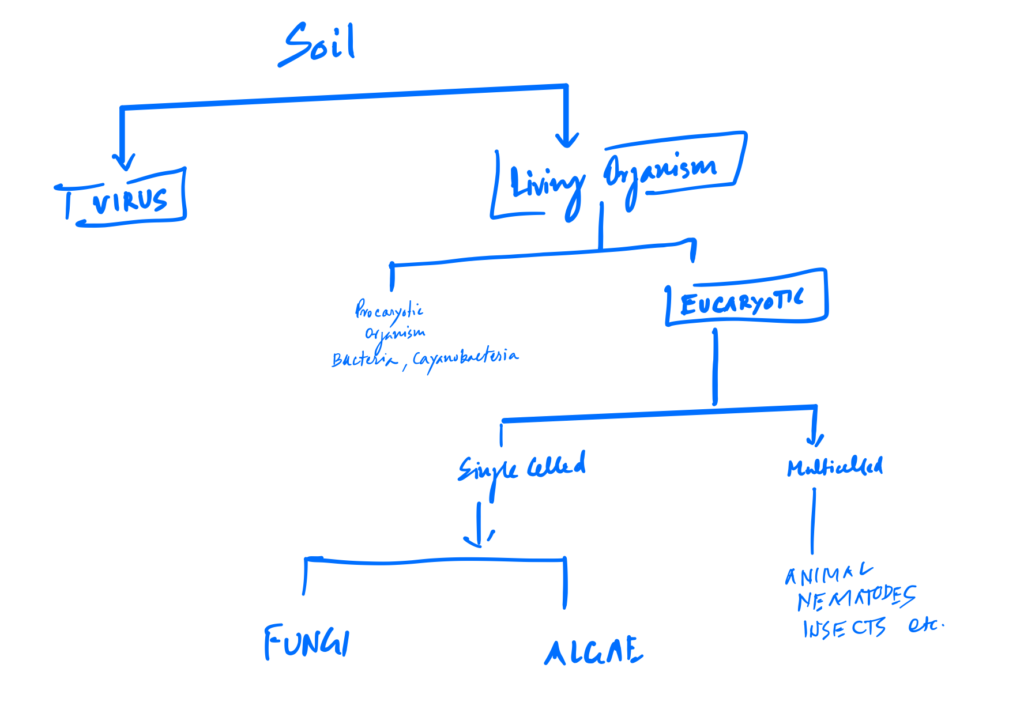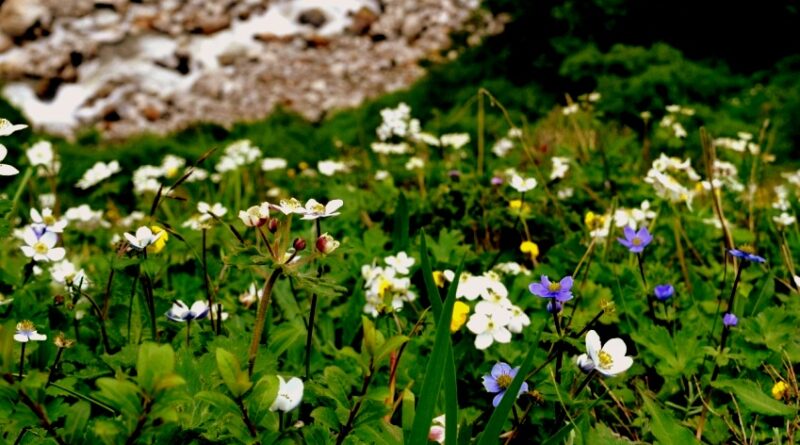Properties of soils under different forest ecosystems.
Soil that has developed under the influence of a forest cover, basically referred as forest soil. Forest soil shows distinct characters than the normal soil even though they have developed from the common parent material and under same climatic conditions. This is because of
1) unique effects of deep rooting by trees,
2) specific organisms associated with forest vegetation and
3) litter layer and leaching promoted by the products of its decomposition
Physical properties
1) Colour: color of the soil is the visual sensation produced by the soil due to the reflection of light. Soil color is imparted mainly by minerals and organic matter. Sesquioxides produces red to brownish color, titanic oxide and humus produces black color, reduced iron oxides (siderite ) produces bluish color, limonite produces yellow color. In general organic matter produces darker color. Soil color is determined by using Mansell color chart. This chart consists of 175 systematically arranged color chips. Munsell notations consist of three variables viz., hue, value and chroma. Hue refers to the dominant spectral color. It is related to dominant wavelength of light. Value refers to the relative lightness or strongness of color. Chroma refers the relative purity or strength of the spectral color.
2) Texture: Texture refers the relative proportion of different soil components such as sand, silt and clay in a soil. There are 12 soil textural classes according to the proportion of these components. Texture of the so i I determines many of the soil physical and chemical properties of the soil. Clay imports many of the chemical properties as well as physical properties. The ideal texture preferable is loam for many of the applications. The loam soil exhibits equal properties of sand, silt and clay. But this does not mean that it contains equal proportion' of sand, silt and clay.
3) Structure: Soil structure is defined as the arrangement of soil particles into groups or aggregates. There are four types of soil structure viz., spheroid, platy, prismatic and blocky structure.
(a) Spheroid structure has well development along its all sides. This may be granular (non porous) or crumb structure (porous). Crumb structure is considered as better for arable farming practices.
(b) Platy structure refers the arrangement of soil aggregates in thin horizontal plane. If the aggregates are thick, then it is called as platy structure otherwise (thin units) it is called as laminar structure. The platy structured soil has poor aeration capacity.
(c) Prism like structure has well development on vertical axis than the horizontal axis. Columnar and Prismatic subtypes are recognized in which columnar structure have round top region whereas prismatic type have flat top region.
(d) Blocky structure: In this all three dimensions of the soil aggregates are well developed which vives block like appearance. If the edges of the cubes are sharp which are called as angularblocky structure. Ifthe edges are not sharp, these structures are called as sub-angular blocky structure.
Soil structure influences the quantum and nature of porosity in soil. Thus by it indirectly determines
the water retention capacity, runoff and erosion in soil.
3) Density: Density refers the unit weight of any object. Bulk density refers the unit weight of soil which includes pore space whereas particle density refers the unit weight of solids in a soil which does not includes pore space. Normally particle density is higher than the bulk density. These properties depend upon the mineral constituents, organic matter content, structural arrangement and texture of
soil.
4) Consistency: The manifestation of the physical forces of cohesion and adhesion acting within the soil at various moisture contents is called as consistency. It determines properties such as resistance to compression, friability, plasticity, stickiness etc. Plasticity is defined as the property which enables soil to take up water, to form a mass that can be deformed into any desirable shape and to maintain the
shape after the deformation pressure is removed.
5) Porosity: Porosity refers to the percent space occupied by air in a soil volume. This gives a
general idea about the aeration of soil, permeability, infiltration, etc.
6) Temperature: Soil temperature refers the relative hotness or coolness of the soil. Soil
temperature is influenced by exposure to light, extent of shade, mineral constituents, texture, moisture,organic matter, etc.
7) Moisture: Soil moisture refers quantum of moisture present in the unit volume of soil. Based on the force by which water is held in the soil, soil-water is classified as follows. Gravitational water refers the water drained by gravity force when soil is fully saturated with water. This removes part of macrospore water in soil. Capillary water is retained in the capillary pores by the forces of cohesion and adhesion. Hygroscopic water is retained very firmly as a thin film around individual soil particles after capillary water has been drained. It is in non-liquid form and hence it is not available to plants.
Chemical properties
1) Soil reaction: Soil reaction designates the acidity or alkalinity of the soil condition. Soil acidity is caused by the excess hydrogen ion concentration whereas soil alkalinity is produced by hydroxyl ion concentration.
2) Electrical conductivity: Electrical conductivity of the soil is a measure of soluble salts presence in a soil. Soil shoeing high EC has higher soluble salts in it and vice versa.
3) Cation exchange capacity: Ion exchange refers the movement of ions between the exchangeable site and soil solution. This is a reversible phenomenon which is most essential for the supply of nutrients to plants. Cation exchange capacity is the amount of exchangeable cations present in the unit weight of dry soil.
4) Anion exchange capacity: Anion exchange capacity is the amount of exchangeable cations present in the unit weight of dry soil.
5) Base saturation: Base saturation designates the proportion of basic cation to the tc>ral cation
exchange capacity.
Biological properties
Biological properties designate the kinds of living organism in a soil. The soil living organism took parts in many of the nutrient cycles in soil. Some microbes' fixes atmospheric nitrogen and some
microbes help in the mobilization of nutrients. But some viruses are antagonistic to plants survive main classification structure of soil microorganism is given below:


